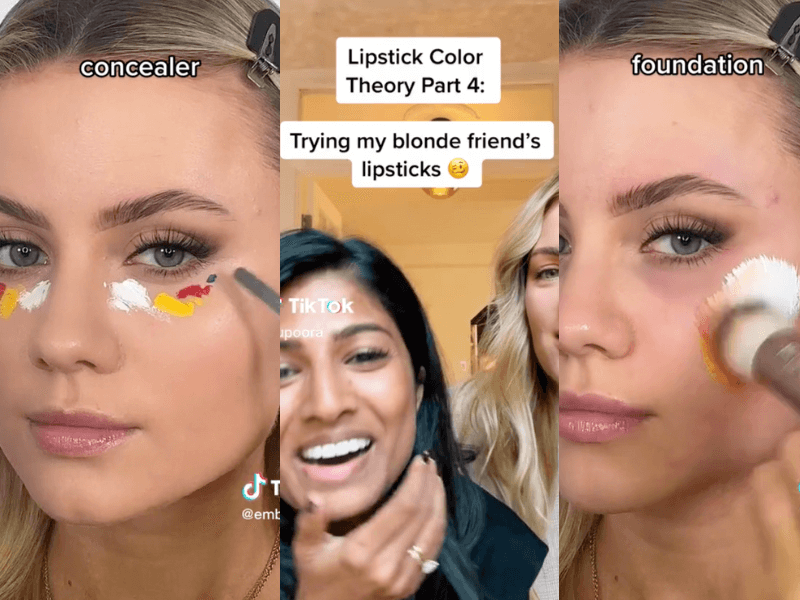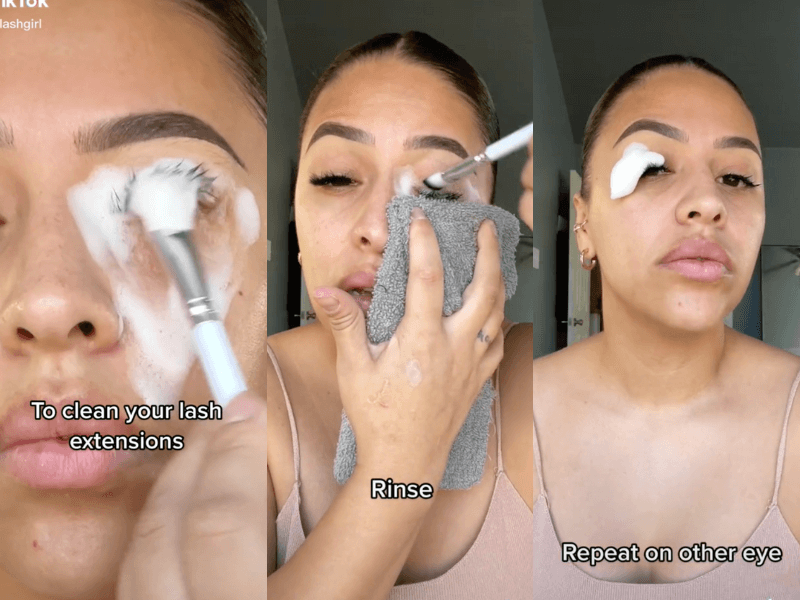Beauty theories are at the forefront of April's TikTok trends, from hair theory determining how people are perceived in society to color theory sparking debates surrounding shade inclusion. The rejection of pushing products to followers continues, as users are encouraged to ditch their skincare routines and indulge in skin fasting. Here's what else happened on TikTok during April, selected by BeautyMatter:

Hair Theory: According to the latest TikTok viral trend, hairstyles play a large part in how society perceives a person, with different styles relaying different impressions. Recently several content creators have taken to TikTok to explain this revelation, naming the trend "hair theory." Under #hairtheory, which currently holds over 70 million views, multiple creators can be found trying out different hairstyles, explaining the "theory" of how each style would lead them to be perceived in the public eye.
A standout example is presented by @perryplatypustiktok, who puts forward the theory that when she wears pigtails, she gains a lot more male attention, similar to how many reported several months ago that wearing a red manicure elicits the same male response—aka, the red nail theory After seeing the trend, the creator reports that she wore her hair in pigtails and wished to experiment with it. The TikToker stated that when on a night out with friends, she gained many more compliments explicitly surrounding her appearance from men than she is used to. While many are latching onto the theory in the comments, others are unsure, criticizing the trend for making "something out of nothing."
Others have taken a more casual approach, filming videos of themselves wearing different styles and asking their followers which one suits them best and what perception each style gives. Beauty brands have capitalized on the trend, with names including Andrew Fitzsimons Hair promoting products that will help TikTokers achieve different results shown in videos, such as beachy waves and hydrated curls.

Skincare Fasting: With a plethora of products being produced at mass, customers are confused as to what is or is not beneficial to their skin. For those with conditions such as acne and rosacea, problems are often worsened due to product overuse. To tackle this, multiple TikTok creators have been practicing skincare fasting, showing followers the do's and don'ts of skincare.
Skincare fasting is similar to skin cycling, which involves a routine of spreading products out across several days to ensure an overload of ingredients are not put on the face at one given time. However, as explained by @malihaihenacho, the difference between the two is that skincare fasting encourages a full 24 hours once a week of no skincare products being used—not even a cleanser. This is said to help the skin barrier repair itself, allowing products to be more effective when used. Those following this plan are encouraged to use only water on their skin and, as a result, avoid direct contact with the sun, to protect the skin from harmful UV rays.
Others suggest that the fast should be followed across a multiple-week period. As explained by @dermtodoor, a minimum of two weeks is recommended for a skin fast that will reap the maximum benefits. The dermatologist explains that this will allow the skin to reset and therefore react better to slowly introduced products. The TikToker suggests that adding a new product each week is the best way to build a successful routine, allowing time for the skin to adapt to each product. Brands, including beauty tea company Pique, have jumped on the trend, using the hype to market their best-selling products, such as its drinkable beauty elixirs. The brand's video suggests that during skin fasting is the best time to tackle an inside-out approach, which focuses on clearing the skin by combating internal problems as opposed to applying products to the surface of the skin.

Color Theory: A video posted by @lccbeauty began the craze behind color theory. In the clip, which now has over 18.7 million views, the content creator applies multiple liquid products to her face in different primary colors, blending together to create the perfect shade of foundation, bronzer, blush, and blush lipstick. Several users have attempted to recreate the trend, including @demingai, who reassures followers that it's more challenging than it looks, with her first attempt at foundation coming out gray before adding more yellow to achieve a match. The trend has started a debate between those who think such a practice is a great idea and the answer to an ongoing struggle to find a perfect shade match, and those who disagree, putting forward the argument that beauty brands should be inclusive enough to have shades that match a range of skin tones.
A wider conversation has also been opened up by the trend, sparked by a video posted by @nupoora, which shows two friends of different races using the same makeup products, discussing how different the same shade of lipstick looks on multiple skin tones. The video, which has over 1.5 million likes, ignited further comments surrounding the level of trust consumers have for makeup brands, with one comment reading, "This is why I don't bother on makeup reviews for lipsticks. It's something I have to figure out on my own." The trend has also seen a call for brands to begin using color theory to explain their products, with more education surrounding undertones that will help consumers to better understand how to match their skin tone to products. After all, it has been proven that brands studying and communicating with their consumers about undertones have had greater success, including Fenty Beauty, with their shade-finder tool that focuses heavily on undertones.

Lash Bath: As the false eyelash market is predicted to grow from $1.41 billion in 2023 to $2.12 billion in 2030, several eyelash technicians are encouraging strict aftercare for their clients to ensure the best results. As a result, lash bath aftercare has seen a large growth across TikTok, with the search term currently having over 49.8 million views.
Across the app, multiple users demonstrate the most effective way to protect eyelash extensions. In a video put forward by @theelashgirl, a step-by-step eyelash bathing routine is showcased. The process begins using a clean eye makeup brush and applying soap to the lashes and eye area in a circular motion, as the content creator reminds viewers to get into all the cracks of the eye, brushing in an upward motion to ensure all lashes are targeted. The eye area is then rinsed using a small amount of water, so as not to be too harsh on the eyelashes. It is then recommended that the eyelashes are patted dry, as opposed to pulled or tugged at, as this is said to damage the bed that the lashes lay on.
Several users have commented on how this technique has helped to preserve their eyelash extensions longer than usual. In contrast, others have commented that this technique led to their extensions falling out. In response, several eyelash technicians have posted videos explaining that lashes applied correctly should not fall out during this process, suggesting that clients speak to their technicians should this problem occur. Multiple viewers have indicated that they did not know this technique before seeing it on TikTok, showing that, once again, the app has become an educational platform that is working to improve beauty services and products alike.

Want to continue reading this article and others just like it?
Subscribe to BeautyMatter and access the most current beauty intelligence and news updates.
SubscribeAlready a member, login here.